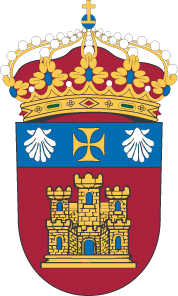Por favor, use este identificador para citar o enlazar este ítem: http://hdl.handle.net/10259/9778
Título
Synthesis, Crystal Structure, Spectroscopic Characterization, DFT Calculations and Cytotoxicity Assays of a New Cu(II) Complex with an Acylhydrazone Ligand Derived from Thiophene
Autor
Publicado en
Inorganics. 2021, V. 9, n. 2, p. 9
Editorial
MDPI
Fecha de publicación
2021-01
DOI
10.3390/inorganics9020009
Abstract
A new Cu(II) complex is synthetized by the reaction of copper nitrate and a N-acylhydrazone ligand obtained from the condensation of o-vanillin and 2-thiophecarbohydrazide (H2L). The solid-state structure of [Cu(HL)(H2O)](NO3)·H2O, or CuHL for simplicity, was determined by X-ray diffraction. In the cationic complex, the copper center is in a nearly squared planar environment with the nitrate interacting as a counterion. CuHL was characterized by spectroscopic techniques, including solid-state FTIR, Raman, electron paramagnetic resonance (EPR) and diffuse reflectance and solution UV-Vis electronic spectroscopy. Calculations based on the density functional theory (DFT) assisted the interpretation and assignment of the spectroscopic data. The complex does not show relevant antioxidant activity evaluated by the radical cation of 2,2′-azinobis(3-ethylbenzothiazoline-6-sulfonic acid) diammonium salt (ABTS) method, being even less active than the free ligand as a radical quencher. Cytotoxicity assays of CuHL against three human tumor cell lines, namely MG-63, A549 and HT-29, revealed an important enhancement of the effectiveness as compared with both the ligand and the free metal ion. Moreover, its cytotoxic effect was remarkably stronger than that of the reference metallodrug cisplatin in all cancer cell lines tested, a promissory result in the search for new metallodrugs of essential transition metals.
Palabras clave
Copper(II) complex
N-acylhydrazone
Spectroscopy
XRD crystal structure
DFT calculations
Anti-cancer activity
Materia
Química inorgánica
Chemistry, Inorganic
Versión del editor
Collections











